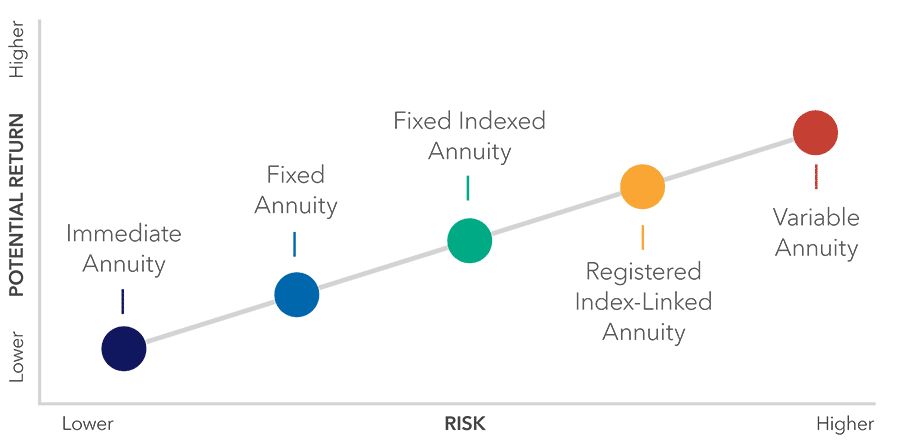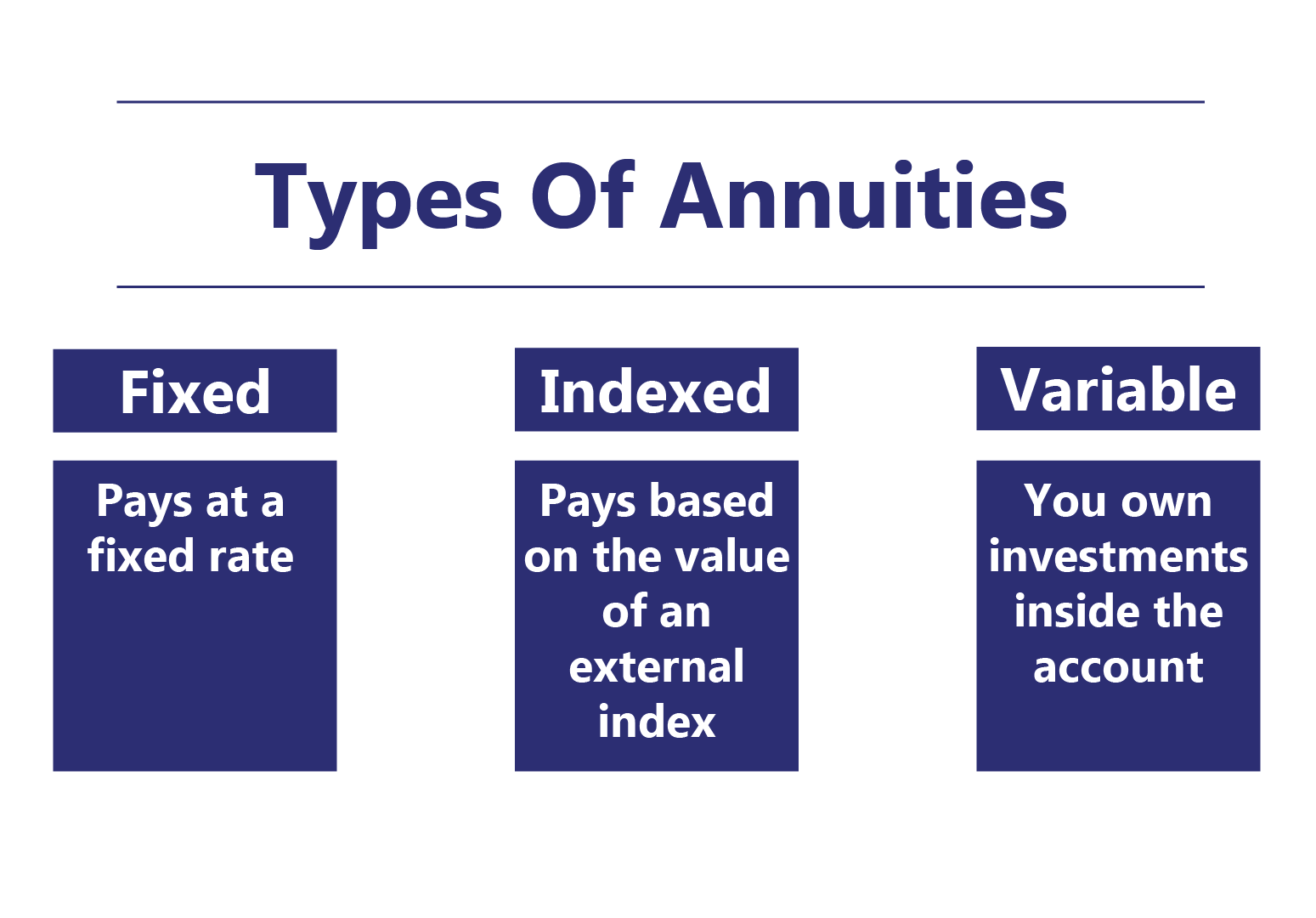All Categories
Featured
Table of Contents
Equally as with a taken care of annuity, the owner of a variable annuity pays an insurance provider a swelling sum or series of settlements in exchange for the promise of a series of future settlements in return. As stated above, while a taken care of annuity grows at an ensured, continuous price, a variable annuity grows at a variable price that depends upon the performance of the underlying financial investments, called sub-accounts.

Throughout the buildup stage, properties spent in variable annuity sub-accounts expand on a tax-deferred basis and are strained just when the agreement proprietor withdraws those incomes from the account. After the buildup stage comes the income stage. Gradually, variable annuity properties need to theoretically increase in value up until the contract owner decides he or she would certainly like to start withdrawing money from the account.
The most considerable concern that variable annuities normally present is high cost. Variable annuities have a number of layers of costs and expenses that can, in accumulation, create a drag of as much as 3-4% of the contract's worth each year. Below are one of the most common costs connected with variable annuities. This cost compensates the insurance provider for the danger that it thinks under the terms of the contract.
Exploring the Basics of Retirement Options A Comprehensive Guide to What Is Variable Annuity Vs Fixed Annuity Breaking Down the Basics of Annuity Fixed Vs Variable Pros and Cons of What Is Variable Annuity Vs Fixed Annuity Why Variable Vs Fixed Annuities Is a Smart Choice How to Compare Different Investment Plans: How It Works Key Differences Between Variable Annuity Vs Fixed Annuity Understanding the Rewards of Long-Term Investments Who Should Consider Strategic Financial Planning? Tips for Choosing Indexed Annuity Vs Fixed Annuity FAQs About Planning Your Financial Future Common Mistakes to Avoid When Planning Your Retirement Financial Planning Simplified: Understanding Your Options A Beginner’s Guide to Smart Investment Decisions A Closer Look at How to Build a Retirement Plan
M&E expenditure fees are determined as a percent of the agreement worth Annuity issuers hand down recordkeeping and various other management expenses to the agreement owner. This can be in the type of a flat annual fee or a percentage of the agreement value. Management fees may be consisted of as component of the M&E risk charge or may be analyzed individually.
These charges can range from 0.1% for passive funds to 1.5% or even more for actively taken care of funds. Annuity agreements can be customized in a variety of means to serve the certain demands of the agreement owner. Some common variable annuity cyclists consist of guaranteed minimal buildup benefit (GMAB), assured minimum withdrawal advantage (GMWB), and guaranteed minimal income advantage (GMIB).

Variable annuity payments offer no such tax deduction. Variable annuities often tend to be highly ineffective automobiles for passing riches to the future generation since they do not enjoy a cost-basis modification when the original agreement owner dies. When the owner of a taxed investment account dies, the cost bases of the investments held in the account are readjusted to show the market rates of those investments at the time of the owner's fatality.
Breaking Down Immediate Fixed Annuity Vs Variable Annuity A Closer Look at How Retirement Planning Works Breaking Down the Basics of Annuity Fixed Vs Variable Pros and Cons of Various Financial Options Why Choosing the Right Financial Strategy Can Impact Your Future Fixed Annuity Or Variable Annuity: How It Works Key Differences Between Annuities Variable Vs Fixed Understanding the Key Features of Long-Term Investments Who Should Consider Retirement Income Fixed Vs Variable Annuity? Tips for Choosing Deferred Annuity Vs Variable Annuity FAQs About Deferred Annuity Vs Variable Annuity Common Mistakes to Avoid When Planning Your Retirement Financial Planning Simplified: Understanding Your Options A Beginner’s Guide to Annuity Fixed Vs Variable A Closer Look at How to Build a Retirement Plan
Therefore, beneficiaries can inherit a taxed investment portfolio with a "tidy slate" from a tax obligation point of view. Such is not the situation with variable annuities. Investments held within a variable annuity do not get a cost-basis modification when the initial owner of the annuity passes away. This implies that any kind of gathered latent gains will certainly be passed on to the annuity owner's heirs, in addition to the linked tax burden.
One considerable problem associated with variable annuities is the capacity for disputes of interest that may exist on the part of annuity salespeople. Unlike a monetary expert, who has a fiduciary duty to make financial investment choices that profit the customer, an insurance coverage broker has no such fiduciary commitment. Annuity sales are highly financially rewarding for the insurance coverage specialists who offer them due to high upfront sales compensations.

Several variable annuity contracts contain language which puts a cap on the portion of gain that can be experienced by specific sub-accounts. These caps protect against the annuity owner from completely joining a portion of gains that could otherwise be enjoyed in years in which markets produce substantial returns. From an outsider's point of view, it would certainly seem that investors are trading a cap on investment returns for the abovementioned guaranteed flooring on investment returns.
As kept in mind above, surrender costs can drastically limit an annuity owner's capacity to relocate possessions out of an annuity in the very early years of the contract. Better, while many variable annuities enable contract proprietors to take out a specified amount throughout the accumulation stage, withdrawals yet amount commonly result in a company-imposed cost.
Withdrawals made from a fixed rate of interest investment option could likewise experience a "market value change" or MVA. An MVA readjusts the worth of the withdrawal to mirror any adjustments in rate of interest from the time that the cash was invested in the fixed-rate option to the moment that it was taken out.

Fairly usually, also the salespeople that sell them do not totally recognize just how they work, and so salesmen in some cases victimize a buyer's feelings to market variable annuities instead of the advantages and suitability of the items themselves. Our company believe that investors ought to fully comprehend what they own and just how much they are paying to possess it.
Decoding How Investment Plans Work A Closer Look at Tax Benefits Of Fixed Vs Variable Annuities What Is the Best Retirement Option? Benefits of Fixed Vs Variable Annuity Pros And Cons Why Variable Annuity Vs Fixed Annuity Is a Smart Choice How to Compare Different Investment Plans: Simplified Key Differences Between Fixed Vs Variable Annuity Pros And Cons Understanding the Risks of Fixed Index Annuity Vs Variable Annuity Who Should Consider Strategic Financial Planning? Tips for Choosing the Best Investment Strategy FAQs About Planning Your Financial Future Common Mistakes to Avoid When Choosing a Financial Strategy Financial Planning Simplified: Understanding Your Options A Beginner’s Guide to Variable Vs Fixed Annuity A Closer Look at How to Build a Retirement Plan
Nevertheless, the same can not be said for variable annuity possessions held in fixed-rate investments. These assets legally belong to the insurance provider and would certainly therefore be at danger if the business were to stop working. Any kind of assurances that the insurance business has agreed to offer, such as an ensured minimum income advantage, would certainly be in concern in the occasion of a service failure.
Prospective purchasers of variable annuities need to recognize and consider the financial problem of the providing insurance coverage business before entering into an annuity contract. While the advantages and downsides of numerous kinds of annuities can be discussed, the real concern surrounding annuities is that of viability.
Besides, as the stating goes: "Customer beware!" This write-up is prepared by Pekin Hardy Strauss, Inc. Fixed annuity pros and cons. ("Pekin Hardy," dba Pekin Hardy Strauss Riches Administration) for informative functions just and is not intended as a deal or solicitation for service. The information and information in this short article does not constitute legal, tax obligation, accountancy, investment, or various other specialist suggestions
Table of Contents
Latest Posts
Understanding Financial Strategies Key Insights on Indexed Annuity Vs Fixed Annuity Breaking Down the Basics of Investment Plans Benefits of Choosing the Right Financial Plan Why Deferred Annuity Vs V
Understanding Fixed Indexed Annuity Vs Market-variable Annuity Everything You Need to Know About Variable Annuity Vs Fixed Indexed Annuity What Is the Best Retirement Option? Advantages and Disadvanta
Decoding Immediate Fixed Annuity Vs Variable Annuity A Comprehensive Guide to Indexed Annuity Vs Fixed Annuity Breaking Down the Basics of Investment Plans Features of Fixed Vs Variable Annuity Pros C
More
Latest Posts